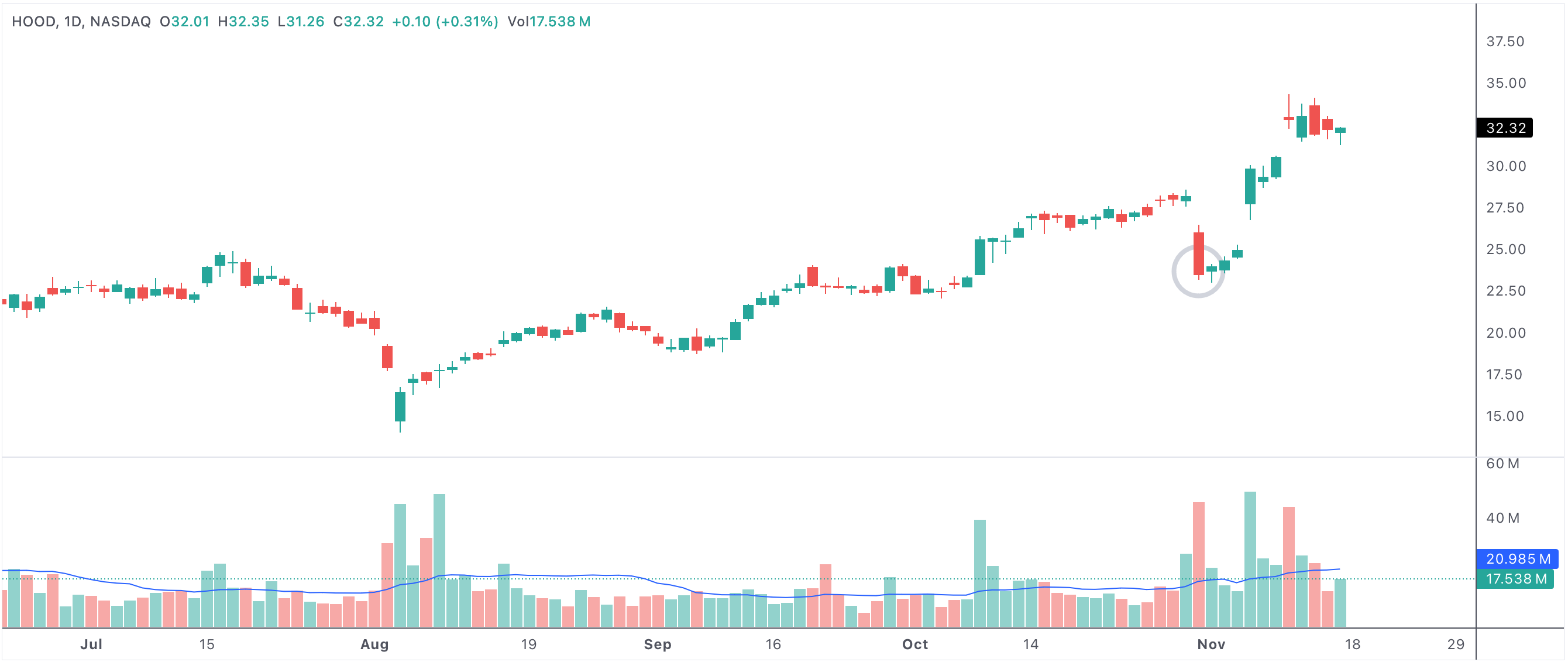Red day then bearish breakout 2-down, bar closes green - Piercing Line pattern
The red day followed by a bearish breakout 2-down with the bar itself closing green is a unique pattern that blends both bearish and bullish signals within a very short timeframe. This structure is often referred to as a Piercing Line pattern in candlestick analysis. It can offer important clues to traders about market psychology, possible reversals, and emerging momentum shifts.

redgreenbear
An example of a stock with a red day followed by a bearish breakout 2-down with the bar itself green
Red day followed by a bearish breakout 2-down with the bar itself green
Understanding the Piercing Line Pattern
The Piercing Line is a two-candle reversal pattern. The first candle is a solid red (bearish) bar, reflecting significant selling pressure. The next candle opens below the previous close, signaling a bearish 2-down breakout, but closes green—often above the midpoint of the first bar. This green close indicates that buyers aggressively stepped in, absorbing the downward momentum and shifting sentiment in their favor.
Bullish Implications of the Pattern
While the initial red day and downside breakout appear bearish, the green bar’s close sends a much more bullish message. It tells traders that, despite early weakness and a new low, buyers overpowered sellers by the end of the session. When seen after a sustained downtrend or near a strong support level, this setup can mark the beginning of a trend reversal. Many experienced traders view it as a cue to monitor for confirmation of bullish follow-through.
- Buyers regain control: The green close signals new demand after bearish exhaustion.
- Momentum shift: Early sellers may get trapped, adding fuel to a bullish move as they cover shorts.
- Key reversal signal: Especially effective after several declining sessions, as markets seek equilibrium.
How Smart Traders Use the Piercing Line
Successful technical traders often wait for confirmation before acting. When a Piercing Line forms, they may look for the next session to open strong or break above the green candle’s high as proof that buyers are in control. Some may enter at the close of the green bar if volume is rising and market sentiment has clearly shifted.
This setup can also be used in combination with other technical tools: volume spikes, RSI turning up from oversold, or positive divergences on momentum indicators all reinforce the case for a bullish reversal.
Market Psychology and the Piercing Line
This pattern often forms when fear is peaking and late sellers are pushing prices lower. Smart money uses this exhaustion to accumulate shares at a discount. The forceful green close triggers short covering and attracts momentum buyers, leading to a fast and sharp price recovery if conditions align.
Because the pattern reflects both panic and optimism within two sessions, it’s a favorite for swing traders who want to catch rapid reversals or short squeezes.
Piercing Line in Different Market Environments
The Piercing Line pattern has more power when found after a well-defined downtrend, or if it occurs near a major technical support. In choppy or sideways markets, its effectiveness may be reduced, but it still serves as an early warning for a potential sentiment shift.
In bull markets, this signal can kick off powerful rallies as dip buyers step in aggressively. In bear markets, it can mark short-lived bottoms or relief bounces.
Summary: Why This Pattern Matters
In summary, a red day followed by a bearish 2-down breakout with a green bar—especially when recognized as a Piercing Line pattern—can provide an early alert to bullish reversal potential and increasing buying pressure. While not a guarantee of a sustained uptrend, it is a strong technical clue, particularly if volume increases and confirmation follows in subsequent sessions. Savvy traders use this pattern alongside other technical indicators to find well-timed, high-conviction entries in stocks that are transitioning from weakness to strength.